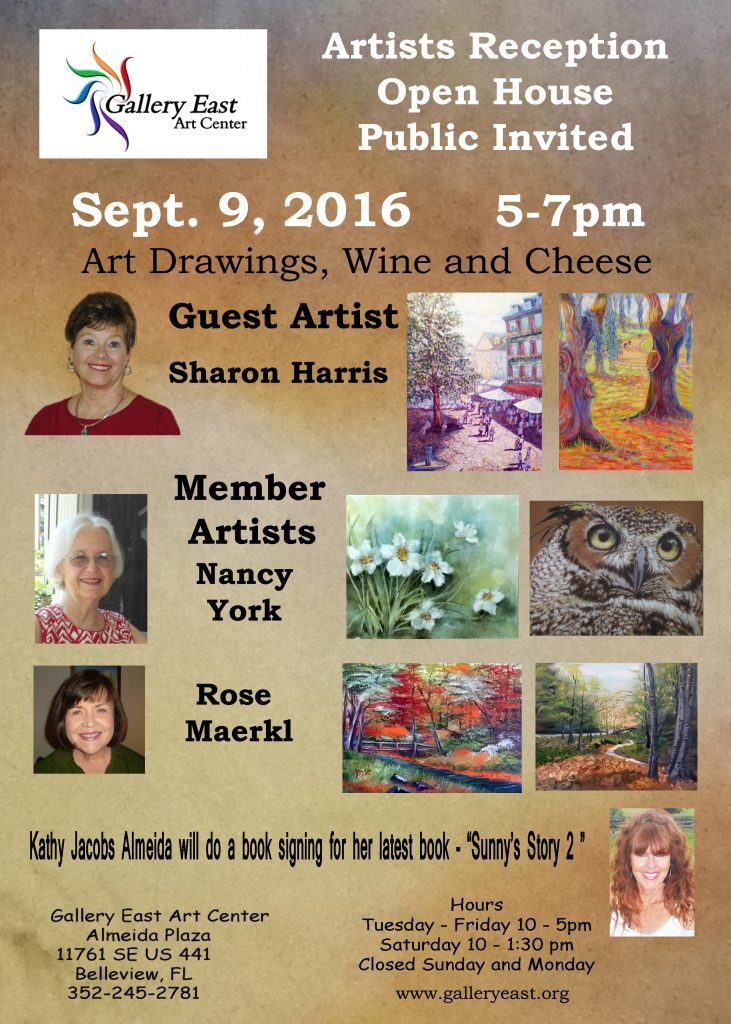Gallery East Arts Center Artist Reception Public Invited September 9, 2016 5-7 PM
Tuesday, August 30th, 2016 Gallery East Arts Center Alameda Plaza 1176 SE. US 441 Bellevue, Florida
Gallery East Arts Center Alameda Plaza 1176 SE. US 441 Bellevue, Florida
352-245-2781
Hours Tuesday through Friday 4:50 PM Saturday 10 to 1:30 PM closed Sunday and Monday www.galleryeast.org
Artist reception open house Public invited September 9, 2016 five through 7 PM art drawings wine and cheese
Guest artist Sharon Harris
Member artist Nancy York and Rose Maerkl
Kathy Jacobs Almeida will do a book signing for her latest book Sonny’s Story 2